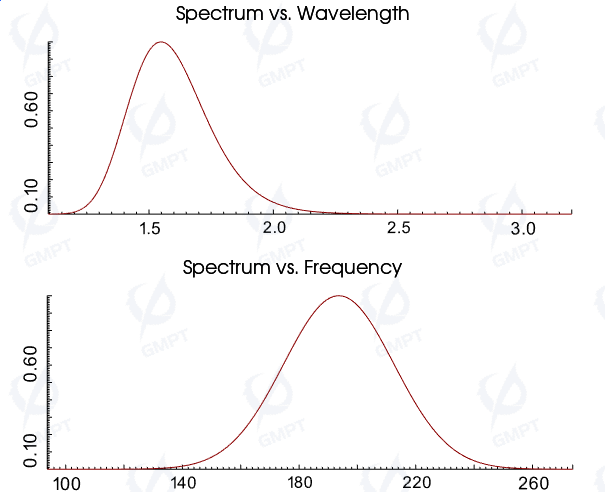Light Source
GMPT, October 2024
The light source is the excitation source in electromagnetic wave simulations. When introducing electromagnetic wave sources in simulations, it is necessary to choose the appropriate excitation source type based on the specific physical problem.
Source Types
The source types in Macondo include:
- Mode Source: A type of surface source, where the electromagnetic field distribution in a 2D cross-section corresponds to a specific mode within a waveguide. It is used to simulate mode propagation in waveguides.
Mode source field distribution:
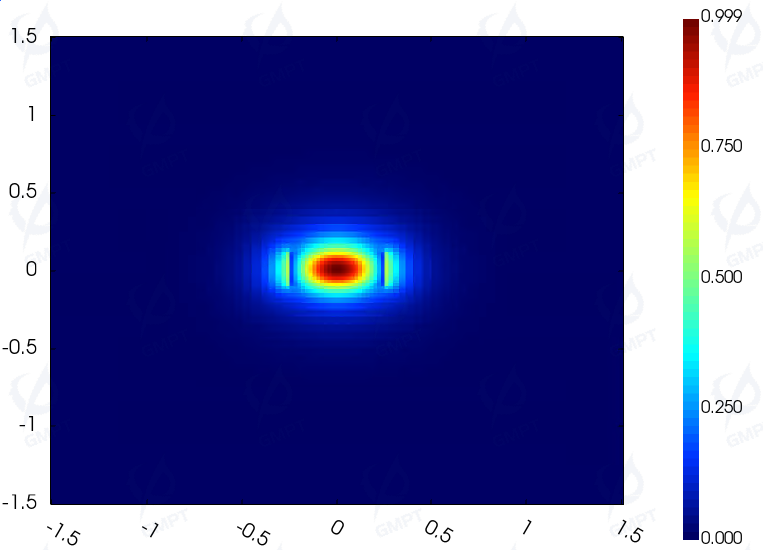
- Plane Wave Source: A type of surface source, where the electromagnetic field is uniformly distributed in a 2D cross-section, used for simulating parallel light.
Plane wave source field distribution at a certain moment:
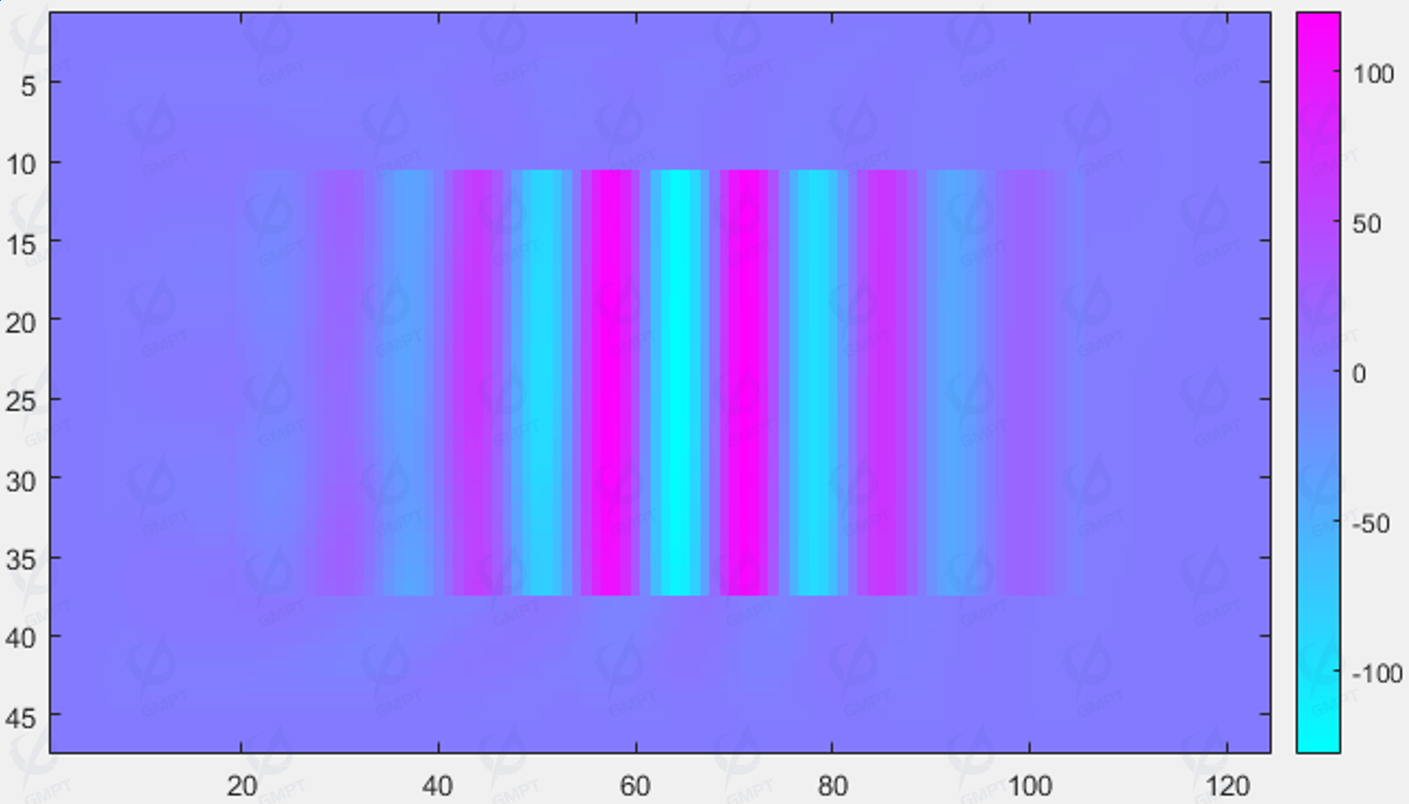
- Gaussian Source: A type of surface source, where the electromagnetic field follows a Gaussian distribution in a 2D cross-section, commonly used for simulating laser beams.
Gaussian source field distribution at a certain moment:
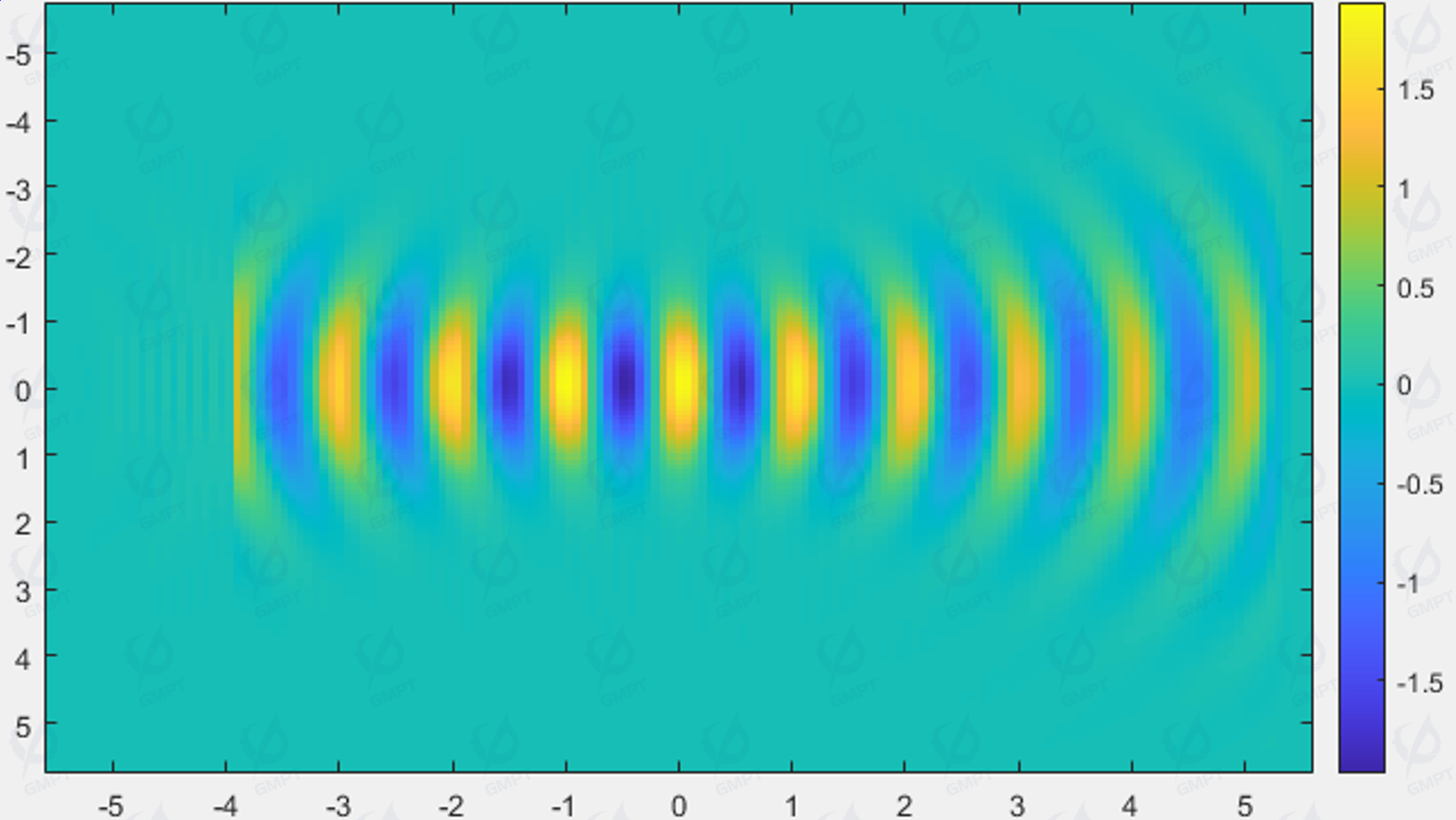
- Dipole Source: A type of point source, used for simulating the propagation of a point light source. It can also simulate other types of sources through the combination of multiple dipole sources.
Dipole source field distribution at a certain moment:
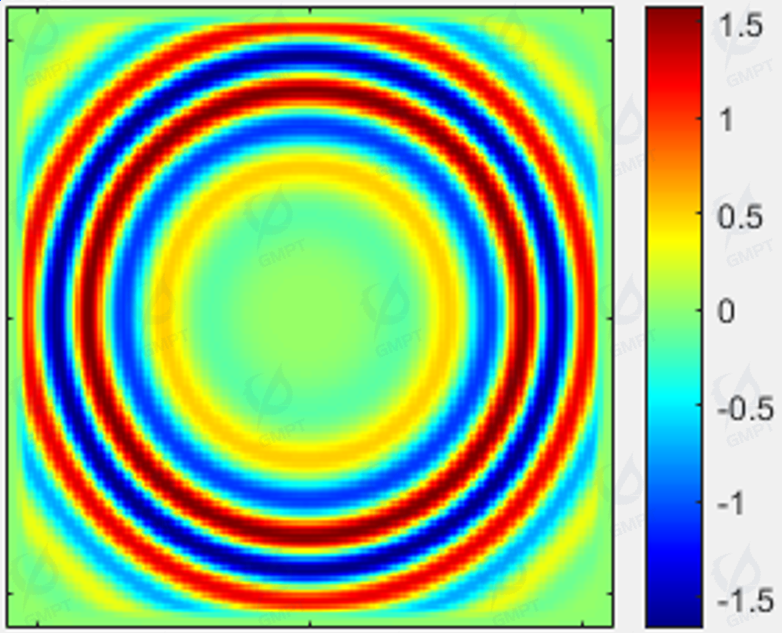
Source Signal
The simulation of excitation sources involves selecting the appropriate waveform and method to introduce the incident wave into the simulation iterations. From the perspective of time variation, excitation sources can be divided into time-harmonic sources, which vary periodically with time, and pulse sources, which have a pulsed form in time. In Macondo's FDTD solver, sources generally use modulated Gaussian pulse sources, with bandwidth and chirp characteristics adjusted uniformly in the time domain to match the characteristics of the source signal.
Modulated Gaussian Source Time-Domain Signal (Wavelength 1.5-1.6μm):
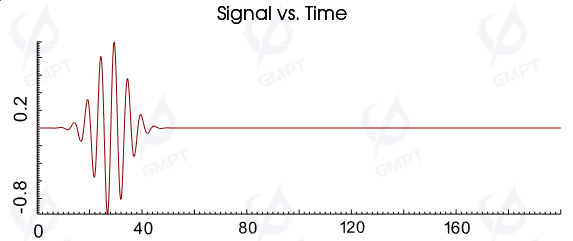
Frequency Spectrum of Modulated Gaussian Source Signal (Wavelength 1.5-1.6μm):
